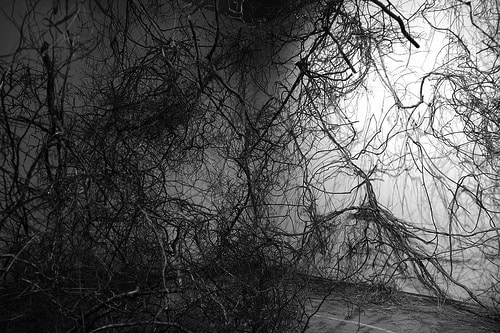 Evolution
Evolution
 Intelligent Design
Intelligent Design
Cell Machinery Untangles Misfolded Proteins

A multipart machine in bacteria, fungi and plants is able to take “irreversible” aggregates of misfolded proteins and untangle them, then refold them for proper function. How does a cell even recognize a misfolded protein?
However it does so, it’s a good thing, because aggregates can gunk up the works of a cell. Aggregates have been implicated in diseases such as Alzheimer’s and Parkinson’s, making the study of protein folding an important focus of research.
The journal Science reports on a “remarkable” case of “evolved machinery”:
Protein misfolding and aggregation would drastically shorten the life of cells were it not for the molecular chaperones that prevent these damaging processes. In vitro, aggregation is irreversible under physiological conditions. Remarkably, the cells of bacteria, plants, and fungi have evolved machinery to neatly extract polypeptide chains from large aggregates and refold them to the native state, with little specificity for protein sequence or fold. (Emphasis added.)
What this means is that lab technicians can’t untangle these blobs in a petri dish, but cells manage to do it. It is remarkable indeed that cells have “evolved” machinery to do what humans cannot. The phrase “with little specificity” indicates that the machinery is general-purpose: it can take most any clump and untangle it. (See our post from February about the cell’s “dumpster” for protein degradation.)
We don’t need to get into the details of machine parts and their names. The author of the Science article, biologist Helen R. Saibil, provides a model diagram of this “highly dynamic” machine and descriptions of what the parts do. There are channels, toggles, linkers, mobile lids, and dockers. One of the primary parts looks like a stack of 3-tiered rings with a channel down the middle. The other part looks a little like Pac-man, biting down on a “hot spot” on the side of the rings, accompanied by other moving parts. Each of the primary parts is further composed of several protein domains. Multiple ATP “energy pellets” power the operation at three locations.
The cell first has to identify the misfolded aggregate, find a loose end, and feed it into a slot on the side-mounted machine. The docking point acts as a regulator that can reprogram the side-mounted machine according to the stage of the operation. Once threaded into the right position, the loose end is fed into the central channel of the three-tiered machine, so that untangling can proceed. The untangled polypeptide exiting the central channel can then be refolded by other chaperone machines at the ready.
Only dim details of this operation are understood so far. The “mechanism” by which the strand is “handed over” from one domain to the other is “unclear,” Saibil writes. It’s also not clear how the tangled mess of peptide pictured in the model diagram can avoid snags as it passes through the machinery. Yet it works. Rightly, Dr. Saibil praises “the remarkable ability of cells to reverse protein aggregation.”
This untangling machinery exists in some of the simplest cells on earth — bacteria — as well as fungi and plants. Mammals also have the ability to untangle proteins, but they do not use the same machines.
Nothing about this looks Darwinian. It’s another case of irreducible complexity: machinery with multiple interacting parts, each necessary for function. The machinery is already there in the simplest cells. It’s essential for cells to survive. It certainly looks designed.
Maybe that’s why Helen Saibil says so little about evolution, other than her comment that “Remarkably, the cells of bacteria, plants, and fungi have evolved machinery to neatly extract polypeptide chains from large aggregates and refold them.” In that sentence, the word “evolved” functions only as a distraction, not as a guide to understanding anything.
Even a cell, it turns out, knows good designs from tangled, useless strings of elements.
Image: “Tangle, 2011, in Progress,” Christine Sciulli/Flickr.
